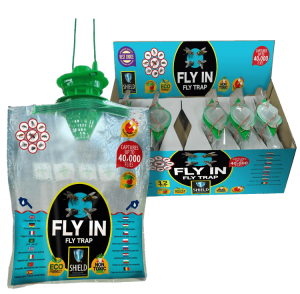
The little fire ant Wasmannia auropunctataGal Cohen – Expert pest control consultant The little fire ant, as her name suggests, is very “little”, only about
Home » Professional Information » The Asian tiger mosquito

The Asian tiger mosquito
Gal Cohen – Expert pest control consultant
The Asian tiger mosquito is an invasive species native to the tropical areas of Asia, where there is plenty of water and humidity most of the year, which serve as the perfect environment for it to develop.
The weather in areas with a short rainy season, makes it difficult for the Asian tiger mosquito to operate and as such, most of its activity is in areas with irrigation and shade within a 100-meter radius. Private yards, open venues, cemeteries, parks and public playgrounds provide excellent development conditions for the mosquito.
The mosquito bites feel like a painful stab and itch terribly.
The intensity of the itch varies from person to person. The mosquito can also bite through your clothes.
The Asian tiger mosquito can transmit diseases to humans and it is estimated that these diseases will spread to many countries in the future.
So far, the professional bodies at government ministries taught us to dry out sources of stagnant water in order to prevent a cozy environment for the mosquitos to develop.
When the municipal dispatch received a request from a citizen, it would usually send the pest control unit of the local authority responsible for dealing with the water sources in the area, such as streams, winter puddles, etc.
Since we already know that the source of the Asian tiger mosquito is in our yard, and that the mosquito develops in places with very little water like small containers, at the bottom of flower pots, in clusters of wet leaves, faulty water drainage, air-condition ducts, and other concealed and unapproachable places like high drainpipes, under buildings and other locations, we cannot continue dealing with it like we deal with mosquitos of other species.
The most effective treatment against the Asian tiger mosquito is combining it with BUG insecticide.
BUG – and no more mosquitos
The product BUG, is an insecticide for exterminating the Asian tiger mosquito.
The product’s formulation enables it to be effective for a long time and exterminate adult mosquitos in the treated area.
The control treatment is performed with a high-pressure motoric sprayer.
The product is sprayed on and inside vegetation surrounding the building being treated, as well as on tall grass.

The little fire ant Wasmannia auropunctataGal Cohen – Expert pest control consultant The little fire ant, as her name suggests, is very “little”, only about


The German cockroach (Blattella germanica)Gal Cohen – Expert pest control consultant It usually arrives as a hitchhiker, mainly in different food deliveries, inside cases of

SHIELD offers an exclusive opportunity for distributors seeking to grow and expand their business.
Our products have high year-round demand and sell at various convenient stores.

SHIELD offers an exclusive opportunity for distributors seeking to grow and expand their business.
Our products have high year-round demand and sell at various convenient stores.
User Agreement | Privacy
All rights reserved